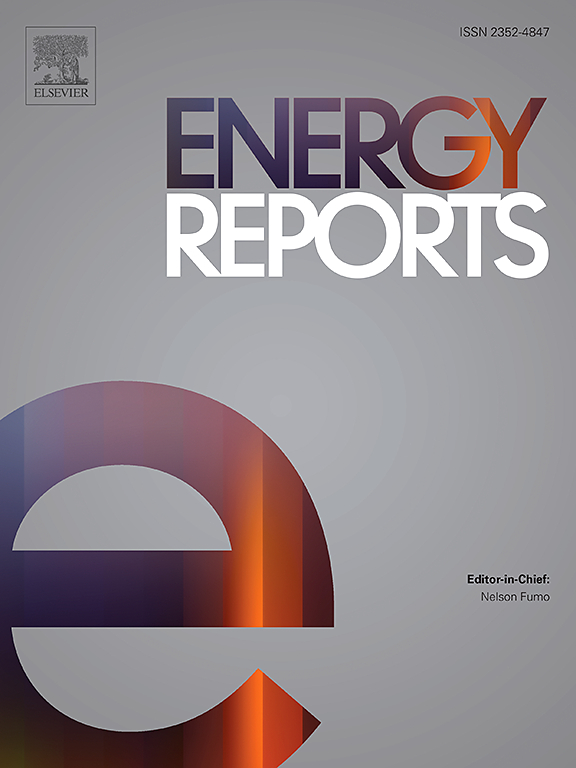考虑阶梯式碳交易和源-负载侧资源的综合能源系统低碳优化调度
IF 4.7
3区 工程技术
Q2 ENERGY & FUELS
引用次数: 0
摘要
在实现碳调峰和碳中和的双碳目标下,综合能源系统(IES)通过整合多种能源来提高电力行业的环境可持续性。为了提高 IES 能源的低碳利用率,本文引入了一个经济优化模型,该模型结合了分步碳交易以及源端和负载端资源。首先,该模型将聚光太阳能电站(CSPP)与热电联产(CHP)装置整合在一起,实现电热双向转换,并在 IES 中加入了电能转化为燃气(P2G)和碳捕集系统(CCS),实现碳回收利用。在需求方面,需求响应优化了电热负荷曲线。随后,阶梯式碳交易机制引导系统控制碳排放并构建碳排放模型。最后,该模型使能源购买成本、碳交易成本、需求响应补偿成本、风力削减罚款和设备维护成本之和最小化,从而经济地优化 IES。通过建立五种方案进行比较分析,将 CSPP、P2G-CCS、需求响应和阶梯碳交易机制结合起来,系统成本、碳排放量和弃风率分别降低了 21.1%、30.87% 和 23.78%,验证了该模型在促进低碳经济方面的有效性。本文章由计算机程序翻译,如有差异,请以英文原文为准。
Optimal low-carbon scheduling of integrated energy systems considering stepped carbon trading and source-load side resources
Under the dual-carbon goal of achieving carbon peaking and carbon neutrality, the Integrated Energy System (IES) enhances the power sector's environmental sustainability by integrating multiple energy sources. To enhance the low-carbon utilization of IES energy, this paper introduces an economic optimization model that incorporates stepwise carbon trading and both source and load-side resources. Initially, the model integrates a Concentrated Solar Power Plant (CSPP) with a Combined Heating and Power (CHP) unit for bidirectional electricity-heat conversion, and incorporates Power to Gas (P2G) and Carbon Capture System (CCS) for carbon recycling within the IES. On the demand side, demand response optimizes the electricity-heat load curve. Subsequently, a stepped carbon trading mechanism guides the system in controlling carbon emissions and constructing a carbon emission model. Finally, the model minimizes the sum of energy purchase costs, carbon transaction costs, demand response compensation costs, wind curtailment penalties, and equipment maintenance costs to optimize the IES economically. By establishing five scenarios for comparative analysis, incorporating CSPP, P2G-CCS, demand response, and a stepped carbon trading mechanism reduces system costs, carbon emissions, and abandonment rates by 21.1 %, 30.87 %, and 23.78 %, respectively, validating the model's effectiveness in promoting a low-carbon economy.
求助全文
通过发布文献求助,成功后即可免费获取论文全文。
去求助
来源期刊

Energy Reports
Energy-General Energy
CiteScore
8.20
自引率
13.50%
发文量
2608
审稿时长
38 days
期刊介绍:
Energy Reports is a new online multidisciplinary open access journal which focuses on publishing new research in the area of Energy with a rapid review and publication time. Energy Reports will be open to direct submissions and also to submissions from other Elsevier Energy journals, whose Editors have determined that Energy Reports would be a better fit.
 求助内容:
求助内容: 应助结果提醒方式:
应助结果提醒方式:


